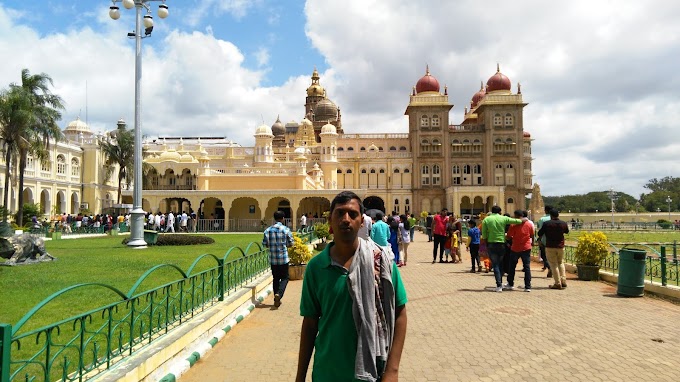SPICE PRODUCTION OF INDIA AND DEMAND OF INTERNATIONAL MARKET:
CULTURE OF FOOD
Everyone likes to eat or drink spice (Masala) item which gives
wonderful charm. In India it is very common to use the spice and easily
available new by shops and also Indian food have something very different test
and process of cooking is very unique. India is aptly named the land of spices.
I am belonging to India so it is common thing but what about other country in
world?
MEANING OF SPICE (MASALA):-
All people like spice food and all are aware about spice.
According to Cambridge Dictionary “a substance made from a plant, used to give
a special flavour to food is called
Spice”
Accordingly to the Collins Dictionary “A spice is a part of a plant or a power made from that
part which you put in food to give it flavor”
EXPORT:-
India is the largest exporter of spice in world and all item of
spice also available in india. The test of such spice have unique flavor for
which every country like to import spice item from india. Indian company like
RUCHI, BHARAT MASALA, MDH MASALA, GRUHASTI …. etc are the leading company in
export field to different part of World.
All spice are available in India it is true but all spice are
from different part of India and the company are collected such spice item as
it is basis and after beatification there production are two type one is powder
and another are hard materials.
LIST OF SPICES AND PLACE OF PRODUCTS AND QUANTITY FY 2019-20
|
Name of Spice |
Quantity of production |
Place of production |
|
Ajwain |
|
Rajasthan and Gujarat |
|
Almond |
|
Jammu and Kashmir, Himachal Pradesh
main area |
|
Assafoetida |
|
Himachal Pradesh (Lahaul Valley) |
|
Basil leaf |
|
Punjab and Himachal Pradesh Mainly use as spice but any can get it
through out India |
|
Bayleaf |
|
North-East India Mountains,
Himalayas southern slopes, Bihar, Uttar Pradesh, Karnatak, Kerala |
|
Betal leaf |
|
Andhra Pradesh, Telangana, Karnataka, Kerala
and Tamil Nadu |
|
Betal Nuts |
|
Karnataka, Kerala,Tamil Nadu, Assam,
Meghalaya, West Bengal, Mizoram |
|
Black Cardamom |
|
Eastern Himalayas, Sikkim, and parts of
Darjeeling district in West Bengal |
|
Green Cardamom |
|
Karnataka, Kerala,Tamil Nadu |
|
Black pepper |
|
Kerala, Karnataka,Tamil Nadu Maharashtra and
Andaman & Nicobar Islands |
|
Black salt |
|
Hisar district, Haryana |
|
Camphor |
|
Kerala |
|
Cashew Nut |
|
Maharashtra, Andhra
Pradesh, Odissa, Kerala |
|
Channa Dal |
|
Madhya Pradesh, Maharashtra, Rajasthan, Uttar
Pradesh, Andhra Pradesh, Karnataka. |
|
Cinnamon |
|
Meghalaya, Maharashtra and Karnataka |
|
Clove |
|
Tamil Nadu, Kerala, Karnataka |
|
Coconut |
|
Kerala, Karnataka, Tamil Nadu and
Andhra Pradesh |
|
Copra |
10 lakh tonnes |
Andhra Pradesh |
|
Coriaander Sseedds |
7,55,000 metric tons |
Madhya Pradesh, Andhra Pradesh, Tamil
Nadu, Karnataka, Rajasthan |
|
Corriandder Leaf |
|
Andhra Pradesh, Tamil Nadu, Karnataka,
Rajasthan and Madhya Pradesh |
|
Cumin Seeds |
70% of world production |
Gujarat and Rajasthan |
|
Curry Leaf |
|
Tamil Nadu and Karnataka State |
|
Dried ginger |
57,000-60,000 tonnes |
Assam, Maharashtra, West Bengal |
|
Dry Chilli |
|
Andhra Pradesh, Maharashstra, Karnataka and
Tamil Nadu |
|
Fennel |
|
Rajasthan, Andhra Pradesh, Punjab, Madhya
Pradesh, Uttar Pradesh, Gujarat, Karnataka, and Haryana |
|
Fenugreek Seeds |
|
Rajasthan, Gujarat, Madhya Pradesh and
Uttaranchal |
|
Flattenned Rice |
|
Madhya Pradesh and Orissa |
|
Garlic |
1.1 million metric tons |
Rajasthan, Uttar
Pradesh, Gujarat and Punjab |
|
Ghee |
2,273 Billion (indian rupees) in 2019 |
Uttar Pradesh, Rajasthan and Madhya Pradesh |
|
Gingelly Seeds |
|
Gujarat, West Bengal, Karnataka, Rajasthan,
Madhya Pradesh, Tamil Nadu, Andhra Pradesh, Maharashtra |
|
Ginger |
|
Gujarat, West Bengal, Assam Maharashtra, Kerala. Meghalaya.
Mizoram. Karnataka |
|
Gooseberries |
|
Gujarat, West Bengal, Karnataka, Rajasthan,
Madhya Pradesh, Tamil Nadu, Andhra Pradesh, Maharashtra |
|
Green Chilli |
|
Andhra Pradesh, Karnataka, Andhra Pradesh,
Orissa, West Bengal and Maharashtra |
|
Honey |
48,000 metric tons |
Punjab, Haryana, Himachal Pradesh, UP, Bihar and West
Bengal |
|
Horse Gram |
1.05 lakh tonnes (2012-15) |
Andhra Pradesh, Bihar, Jharkhand, Himachal
Pradesh, Uttaranchal, West Bengal |
|
Jaggery |
70% of world production |
Uttar Pradesh. UP, Maharashtra, Karnataka and
Tamil Nadu |
|
Kalonji Seed |
|
West Bengal, Punjab, Jharkhand, Himachal
Pradesh, Bihar and Assam |
|
Linseed |
|
Madhya Pradesh, Uttar Pradesh,
Bihar, Chhattisgarh, Maharashtra, Jharkhand, Orissa, Assam, West Bengal,
Nagaland, Andhra Pradesh, Rajasthan, Himachal Pradesh, and Telangana |
|
Long Pepper |
|
West Bengal, Assam, Meghalaya, Maharashtra, Orissa, Andhra Pradesh, Uttar Pradesh, Tamil Nadu , and Kerala |
|
Mace |
India is a Second
main Mace Producing country |
Tamil Nadu and Karnataka |
|
Maiza |
9.0 million ha (2013-14) |
Madhya Pradesh, Karnataka,
Madhya Pradesh |
|
Mango Gingeer |
|
Karnataka, Orissa, Assam, Meghalaya,
Arunachal Pradesh and Gujarat |
SPICE IN DETAILS
The country’s total spice production was estimated to be around
9.4 million metric tons for the financial year of 2019-20. The state of
Madhya Pradesh was the largest producer of spices across India and estimated production volume of over three
million metric tons in 2020. Gujarat, Karnataka, Kerala, Tamil Nadu were the leading State for production of spices in India.
Which spice dominates the land of spices?
India is the land
of production of spices as well as in field of use also. India is being the
leading producer and exporter of spices in the world as well as has the most important
domestic spice market in the world. In rural India, dry chilies accounted for
19 percent of the market share. On the other hand, for the same year in the
urban market, this position was held by ginger and garlic. The ginger, garlic,
and chilies occupied the highest positions in the estimated production volume
of spices in India.
The demand in the market of international for Indian spices
raise day by day due to their immunity-boosting properties. In the financial
year 2020, India exported spices worth over 250 billion rupees. India is an
exporter to maximum countries. In the year of 2019, India has export half of
the spices exported to United States,
Bangladesh, and the United Arab Emirates.
The spice may be available in three forms like fresh, whole
dried or pre-ground dried. The use of spice is depend on the use. The use of
spice is very from person to person like one need to use ginger fresh and other
one need dried ginger but generally, spices are dried. Spices may be ground
into a powder for convenience. A whole dried spice has the longest shelf life,
so it can be purchased and stored in larger amounts, making it cheaper on a
per-serving basis. A fresh spice, such as ginger, is usually more flavorful
than its dried form, but fresh spices are more expensive and have a much
shorter shelf life. Some spices are not always available either fresh or whole.
Many countries need
Indian spices for their medicine (Ayurvedic medicine) due to its quality. In
India those spices are use during cooking but some time use as medicine
normally we call it “HOME TREATMENT”.
For the quality
issue the Government of India has certain rules if any one violates its rule
the Government of India imposes fine or in some place closes the production.
But till date such situation has not arise because all spices are collected
from natural sources.



















